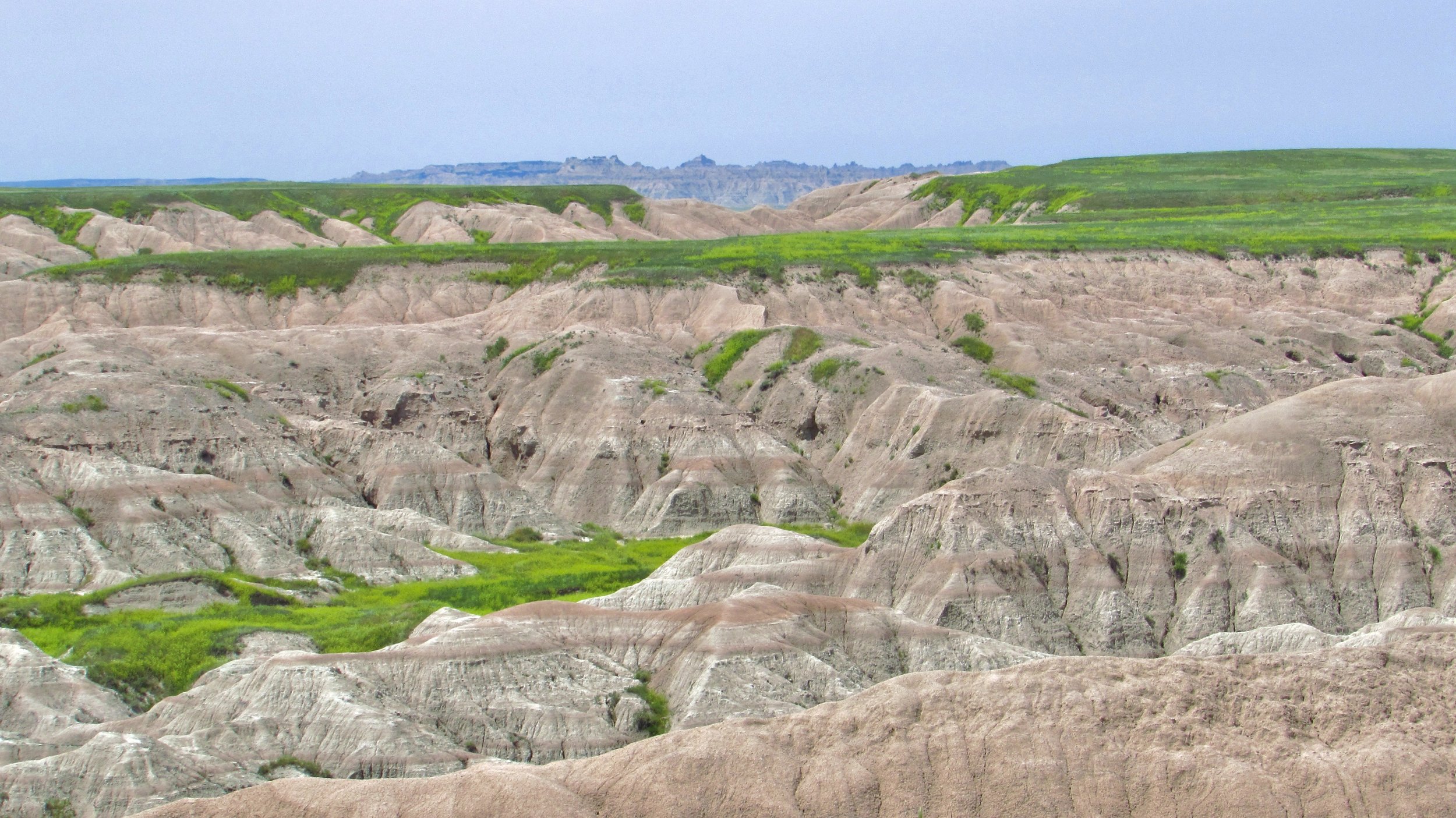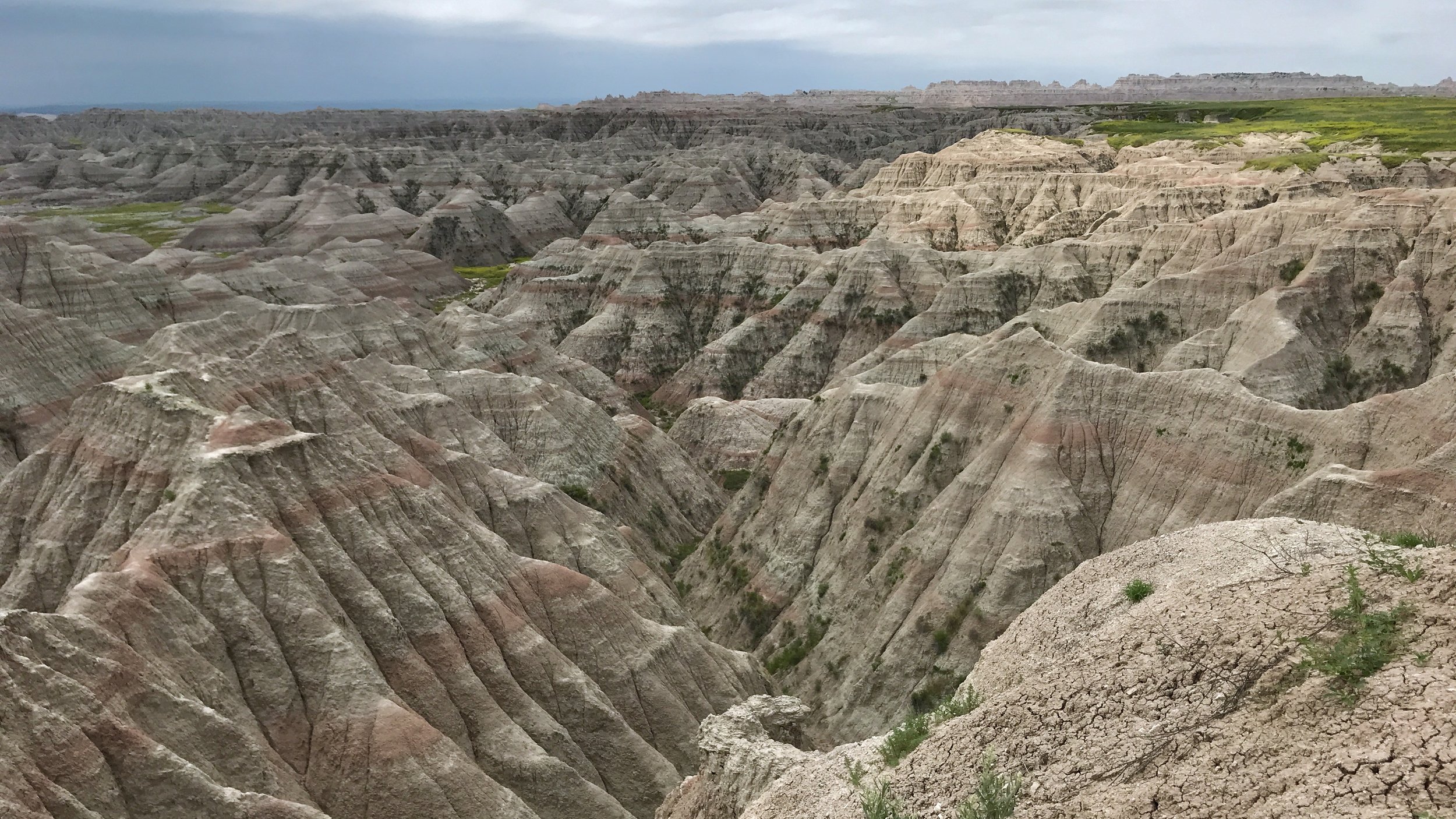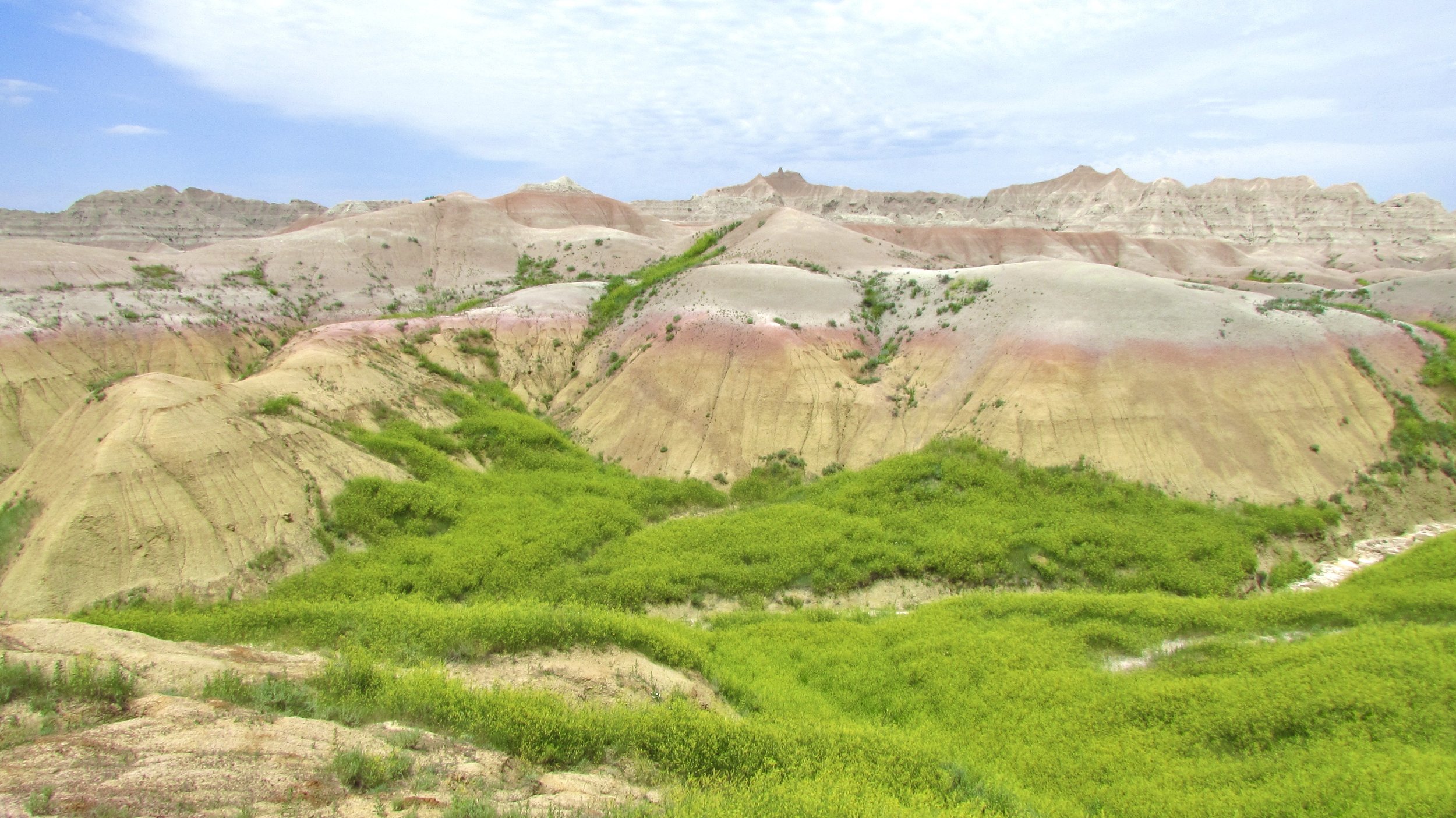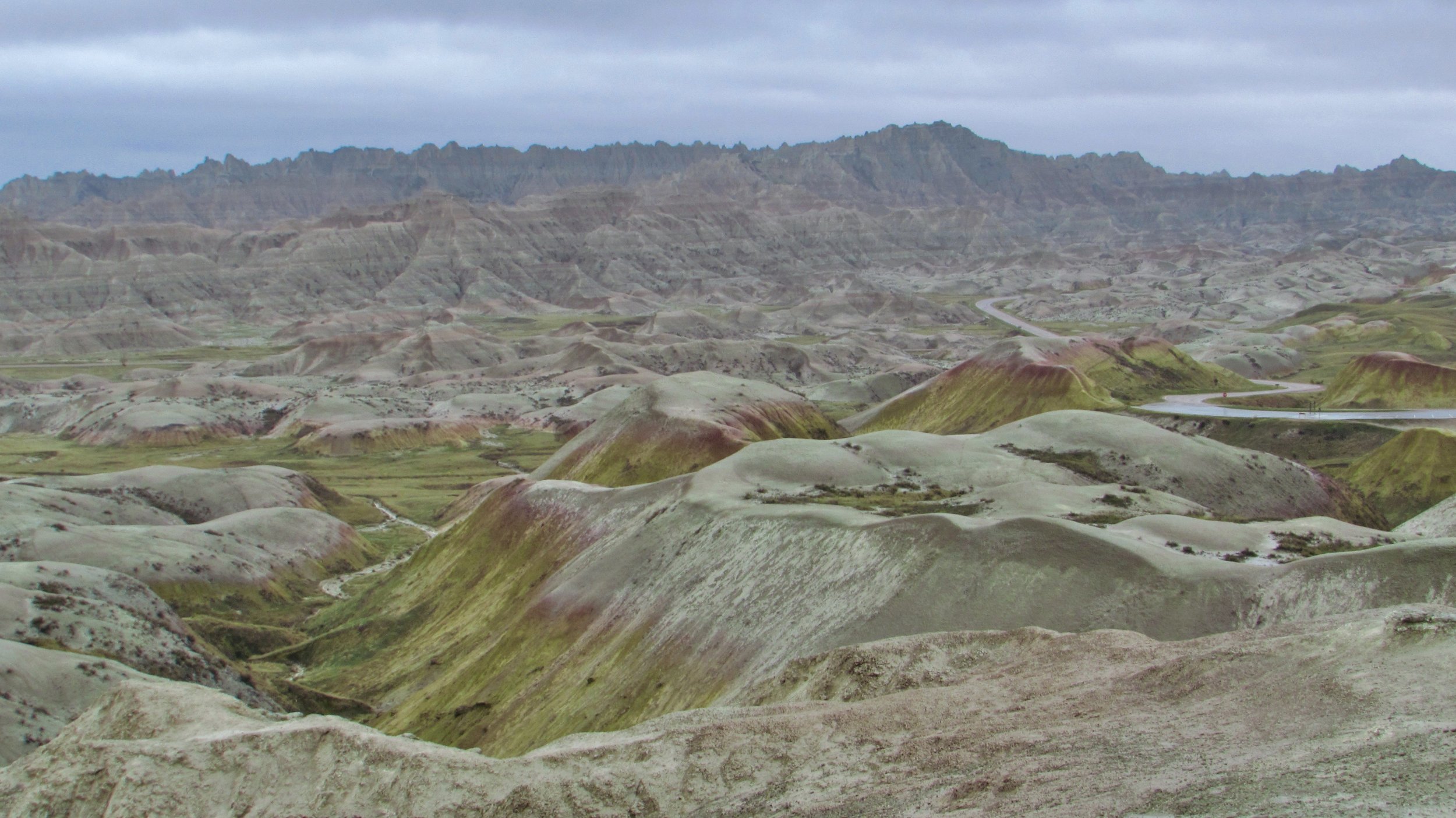
Badlands National Park
Bison, Badlands, Prairie Dogs, Bighorn Sheep, Scenic Drives, Lookouts, Trails, & History
Just east of the Black Hills in South Dakota is located the awe-inspiring Badlands National Park with its fantastic Rim Road and its over 17 stops & lookouts. It may be remote but it’s worth the drive to see its rugged beauty and ancient landscape. Plus it’s got the added benefit of abundant wildlife from Prairie Dogs, to Big Horn Sheep, to our favorite, the Bison! In rain, shine, or snow it’s a must see if you’re ever in the windy area of the northern Great Plains.
There are two campgrounds at the park with the Cedar Pass Campground having 96 reservable sites and then there’s the first-come-first-serve Sage Creek Campground with 22 sites. I’ve stayed at Sage Creek and it was a fantastic place to stay the evening. I even got to see a Bison roam through camp.
There are quite a few hikes, although they do become unusable when wet. Most of the hikes are at the Cedar Pass Area but there are plenty of opportunities for backcountry hiking. The place may actually be seen better that way, via the back country.
The Lakota Indians called the place mako sica. The French fur trappers called the place les mauvaises terries a traverser. Both mean the same thing and its what we Americans also call the place; the Badlands. It may be a hard, windy, seemingly barren landscape but it’s teeming with history both recent and ancient.
75 million years ago it was a lot warmer than it is now (interesting) and a shallow sea covered the interior of the United States and Canada. That sea stretched from the Gulf of Mexico to the Arctic Circle and also covered the Great Plains of the United States and Canada. It was known as the Western Interior Seaway. At the Badlands, this sea can be recognized by the dark color of the lower levels. Then the sea was pushed up and a subtropical forest appeared before it was replaced by a savannah. All in the blink of a geological eye. There’s a bunch of fossils that fill the Badlands from all three of these periods: the sea, the dense & dark forest, and the savannah plains. One of the red bands you can see in the badlands is actually ancient fossilized soils. Some of the fossils include ancient small deer-like creatures, extinct cephalopod or squid like sea monsters, sheeplike mammals, rhinoceros-like beasts, pig-like rodents, one of the earliest saber-tooth cats, and a ton more. Curiously, even though the sea covered this area extensively, very few marine creatures with backbones have been found within the park itself. Yet, they are found abundantly in that layer throughout the great plains. You can see quite a few of them at the Keystone Gallery in Kansas.
Today, Bison roam the Badlands in both massive herds and sometimes as solitary creatures. I have seen both and it’s majestically beautiful every time. Sometimes, you may have to even patiently wade through a herd that is meandering across the road. Just make sure to keep your distance, give them space, and be smart. Don’t become another gored statistic.
Also in the park are quite a few bighorn sheep which are fun to watch as they scale the side of the slippery eroded badlands.
There are also plenty of prairie dogs which love to raid your foodstuffs if you’re camping at the Sage Creek Campground (which is first come first serve), so watch out for them. It’s fun to watch their little colony there though as they fight and run around and make their various calls while watching out for predators.
Coyotes, deer, and all the other little forest and prairie critters also run around the park. Including the Black-footed ferret which was reintroduced into the park in 1994. They’ve since flourished. One of their favorite foods? Prairie Dogs. So as the years march on, I expect the Prairie Dog numbers to lessen.
Humans have been using the Badlands for quite some time. At least 11,000 years ago Mammoth Hunters were scouring the area for their favorite meal before later bison hunters began following the herds. Eventually the Arikara lived in and used the area for their bison hunting before they were pushed out by the new arrivals of the Lakota Sioux from the Great Lakes Region. All the while, French Fur Trappers and eventually American, were hunting and trapping in the area. The Lakota Sioux were exceptional horsemen after they adopted the beast and by the mid 1800s, they were dominating the landscape. Ultimately, American miners, soldiers, farmers, ranchers, and homesteaders would move to the area for their various reasons.
All three times I’ve been to the Badlands, a storm rolled in. One storm brought wintry ice & snow, one brought heavy summer rain, and the other brought massive death bringing thunderstorms with lightning & ferocious wind. I survived all three though, just make sure you’re prepared for the elements in this harsh environment.
Surrounding the Badlands are some awesome sights all by themselves. You’ve got the Red Shirt Table Overlook, the Blue Dinosaur, Tatanka Trading Post, & the awesome Old Longhorn Saloon. Both Tatanka Trading Post and the Old Longhorn Saloon are in Scenic. But the biggest local draw of all would have to be Wall Drug. It’s definitely worth a stop. They’ve got all your souvenirs, snacks, and a fantastic, well stocked bookstore. Plus, it’s just a fun time. And they’ve got a stuffed Bison! And lots of dinosaurs and wild west fun. Also nearby is the Minutemen Missile National Historic Site, which I’ve ran through once on my way to the Badlands. It’s worth a stop if you’re interested in Cold War history. Or at least the propagandistic spin the National Park Service puts on it.































